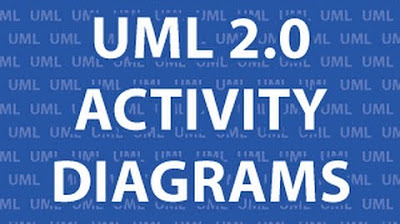تکنیک های نگارش رایتینگ process diagram آیلتس
Summary
TLDRThis video script is a tutorial on how to write process diagrams and flowcharts for IELTS writing tasks. It explains the difference between 'process analysis' and 'information or procedural analysis' and emphasizes the importance of using the correct tense and sequence. The script offers strategies for analyzing diagrams, avoiding repetition, and structuring the response effectively. It also covers how to handle different types of diagrams and provides tips for improving IELTS writing scores.
Takeaways
- 😀 The video aims to teach viewers how to write a process diagram and flowchart for an IELTS test.
- 📈 The video emphasizes the importance of focusing on task achievement rather than task response for higher writing scores.
- 🔍 Two types of process diagrams are discussed: 'Sequential' and 'Informational', with the latter being more academic and often used in IELTS exams.
- ⏰ The video explains the use of 'temporal adverbs' like 'firstly', 'next', and 'finally' to describe the sequence of events in a process.
- 🌟 A key strategy is to use more 'passive voice' constructions to describe processes and diagrams in an academic context.
- 📚 The video provides a strategy for analyzing and writing about process diagrams, including understanding the time setting and details within the diagram.
- 📝 The video suggests using the present simple or continuous tense for processes that occur in the present and the past simple for historical processes.
- 🔑 It's important to pay attention to small details within the diagram, such as numbers and specific labels, as they are crucial for accurately describing the process.
- 🔄 The video discusses the difference between 'cyclic' and 'linear' processes and how to describe them appropriately in an essay.
- 📊 The video provides a step-by-step strategy for writing an overview, including mentioning the number of stages or steps in the process and grouping information logically.
- ✍️ The video concludes with advice on how to write the body paragraphs of the essay, avoiding repetition, and using a variety of linking words and phrases.
Q & A
What is the main focus of the video?
-The main focus of the video is to teach viewers how to write descriptions for diagrams, processes, and charts for the IELTS exam, emphasizing the importance of structure and the use of past, present, and future tenses.
Why is changing sentence structure important when describing diagrams in IELTS writing?
-Changing sentence structure is important to demonstrate a range of grammatical structures and vocabulary, which can improve the score in the 'Lexical Resource' and 'Grammatical Range and Accuracy' criteria of the IELTS writing assessment.
What are the two types of process diagrams discussed in the video?
-The two types of process diagrams discussed are 'Sequential' and 'Continuous'. Sequential diagrams have a clear start and end point, while continuous diagrams loop back on themselves.
What is the significance of using 'past simple' and 'past continuous' tenses in process descriptions?
-Using 'past simple' and 'past continuous' tenses is significant as it allows the writer to accurately describe processes that have been completed or are ongoing, which is crucial for the coherence and accuracy of the description.
Why should one avoid repetition when describing diagrams in IELTS writing?
-Repetition can limit the range of vocabulary and grammatical structures displayed, which may cap the score in the 'Lexical Resource' and 'Grammatical Range and Accuracy' categories. It's important to vary language to show proficiency.
What is the purpose of the 'overview' in the introduction of a process description?
-The purpose of the 'overview' in the introduction is to provide a general understanding of the process without going into specific details, setting the stage for the detailed description that follows.
How does the video suggest grouping information when describing a process diagram?
-The video suggests grouping information based on location, stages, or the shape and appearance of the product. This helps in organizing the description logically and coherently.
What is the role of 'active voice' and 'passive voice' in writing process descriptions for IELTS?
-Both 'active voice' and 'passive voice' play a role in writing process descriptions. The passive voice is often preferred for its object-focused structure, which is suitable for describing processes, while the active voice can add variety.
Why is it important to pay attention to small details in a diagram when writing for IELTS?
-Small details such as specific numbers or labels can provide crucial information about the process, and including them in the description can demonstrate attention to detail and understanding, which can positively impact the score.
What strategy does the video recommend for writing the overview and main body of a process description?
-The video recommends starting with a simple introduction that states the topic and then using a clear structure in the main body to describe the stages of the process, grouping information logically and avoiding repetition.
How should one conclude a process description in IELTS writing?
-One should conclude a process description by summarizing the final outcome or the end result of the process, using a final sentence that clearly indicates the conclusion without introducing new information.
Outlines

This section is available to paid users only. Please upgrade to access this part.
Upgrade NowMindmap

This section is available to paid users only. Please upgrade to access this part.
Upgrade NowKeywords

This section is available to paid users only. Please upgrade to access this part.
Upgrade NowHighlights

This section is available to paid users only. Please upgrade to access this part.
Upgrade NowTranscripts

This section is available to paid users only. Please upgrade to access this part.
Upgrade Now5.0 / 5 (0 votes)





